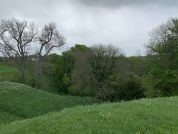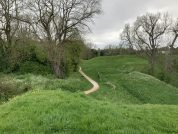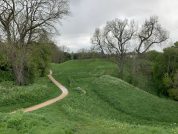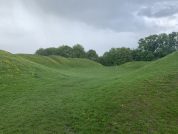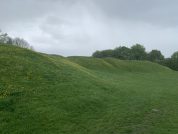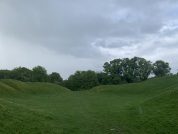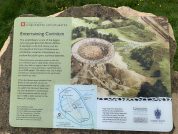Corinium Dobunnorum (Cirencester) Amphitheatre
Amphitheatre
The amphitheatre at Corinium is one of the largest surviving examples in Roman Britain, with seating for over 8000 spectators. It was built in the early 2nd century, for public sport and entertainment. The sport probably consisted of blood sports such as bear, dog, and bull-baiting were common, as were public executions and gladiatorial contests. At the time the Roman city of Corinium (Cirencester) was second only to London in size and importance, with a population of over 10,000.
The amphitheatre was constructed on the site of a limestone quarry outside the city’s defences and was aligned with the main east-west road, which is now called Lewis Lane. From the town the spectators would leave the city via the bath Gate along the road, which was probably lines with food stalls. The large banks you can see today were built to support the tiers for spectators. The stadium was oval in shape with entrances in the north east and south west ends.
After the Roman army left Britain in the early 5th century, the amphitheatre was fortified against Saxon invaders.
In the 18th century, the area was used for bull-baiting, which gave rise to the local name of ‘The Bull Ring’.
Despite the large grassy banks there are few obvious remains of the original amphitheatre seating arrangements.
Sites near Corinium Dobunnorum (Cirencester) Amphitheatre
- Corinium Dobunnorum (Cirencester) Vicus (0 km)
Vicus - Cirencester (Corinium Dobunnorum) Roman Fort (1 km)
Neronian Auxiliary Fort (AD 54–68), Vexillation Fort and Vicus - Fosse Way (1 km)
Roman Road - Ermin Way (2 km)
Roman Road - Daglingworth Villa (4 km)
Villa - Bagendon Settlement (5 km)
Iron Age Settlement and Settlement - Barnsley Park Villa (8 km)
Villa - Combend Villa (10 km)
Villa - Cricklade Roman Settlement (12 km)
Minor Settlement - Chedworth Roman Villa (12 km)
Villa
